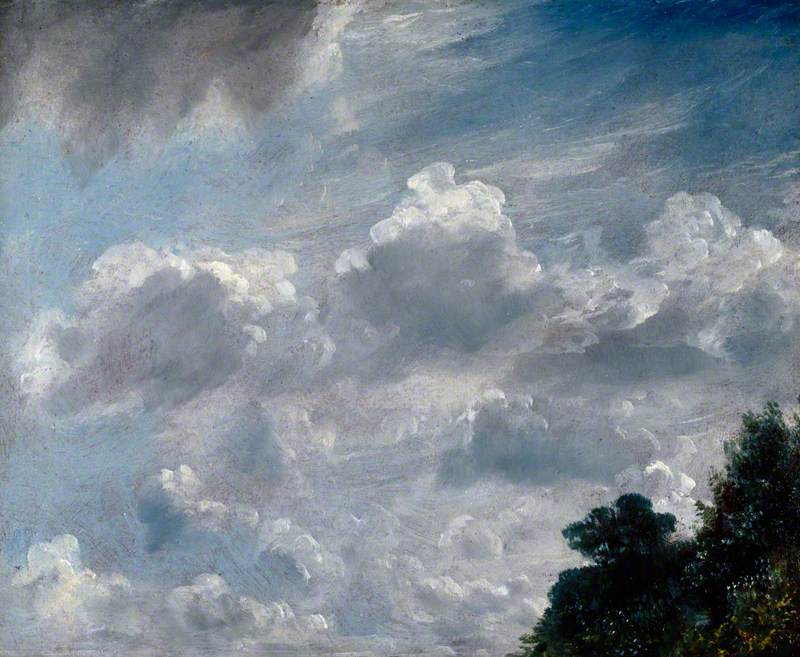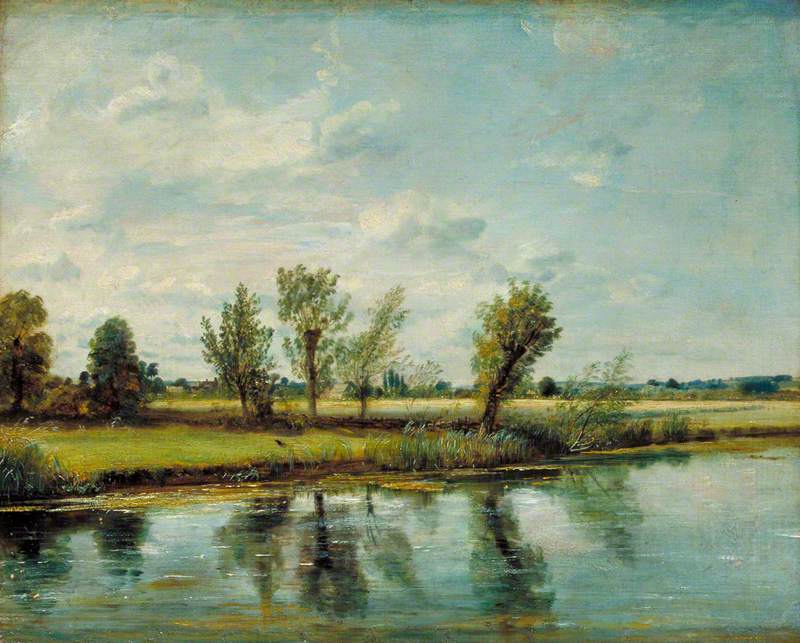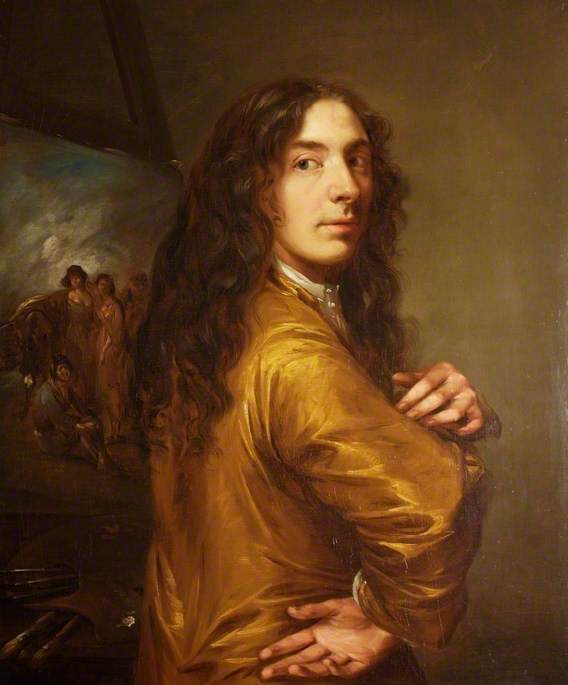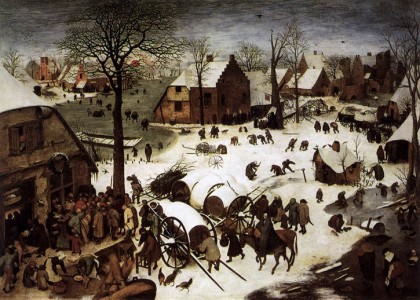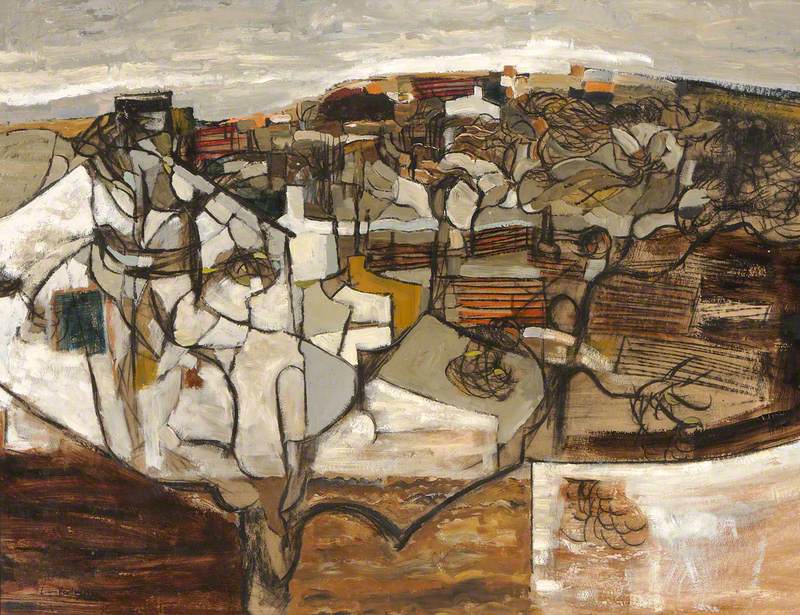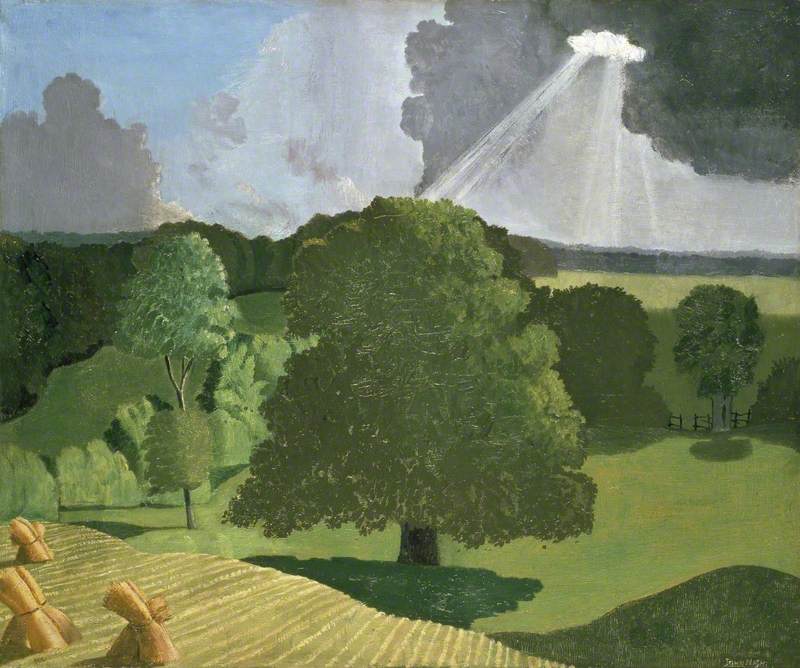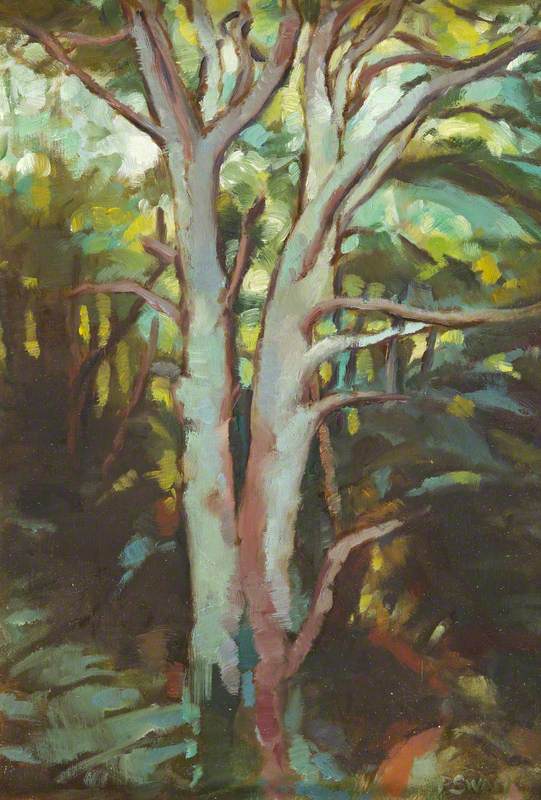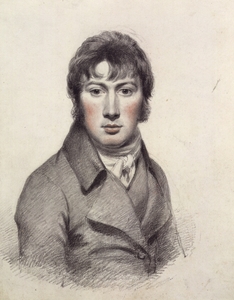John Constable is certainly Britain's best-loved landscape painter – rivalled only by his almost exact contemporary J. M. W. Turner.
The Hay Wain and Salisbury Cathedral have been repeatedly reproduced for over a hundred years. Unlike Turner, however, Constable is closely associated with one part of the country, the Suffolk of his birth, and his novel technique was much criticised in his lifetime and only began to be generally appreciated half a century after his death.
Constable was born in 1775 into a successful family of corn millers, owners of Flatford Mill and Dedham Mill on the River Stour, Suffolk. In 1774 the family had moved to a grand house, East Bergholt House. It was in this countryside, seen in The Valley of the Stour with Dedham in the Distance, that Constable's work remained rooted all his life.
The Valley of the Stour with Dedham in the Distance
c.1800
John Constable (1776–1837) 
His first painting lessons were with John Dunthorne, a local amateur artist, and through the encouragement of the important collector and connoisseur, Sir George Beaumont. In early 1799 in London, he was introduced to the artist Joseph Farington and received his father's reluctant consent to enter the Royal Academy schools. Having his first painting accepted by the Royal Academy in 1802 confirmed his decision to try and make a living as a landscape painter.
Despite continuing to try for election to the Royal Academy, his work was not fully acceptable to the establishment: in 1814 he received no votes at all. But even without official encouragement, Constable's ambitions grew. One of his most notable artistic achievements was to be his series of 'six-footers', large oil paintings that were major statements of his views of the countryside and country life.
Constable was finally elected an Associate of the Royal Academy, the first step to full membership, in 1819.
View this post on Instagram
The first of his six-footers, The White Horse, (now in the Frick Collection) was well received at the 1819 Academy and sold to one of his strong supporters, Dr Fisher for £100, as was 1820's Stratford Mill.
In the same year he began The Hay Wain, the first painting to be preceded by a full-size six-foot sketch, a unique, time-consuming and expensive feature of Constable's working method, but necessary for him to order his ideas in full scale.
In Hampstead in 1820–1822 he made his first set of sky studies, which are notable for their meteorological exactness.
In 1821 The Hay Wain was exhibited at the Royal Academy and well received. Constable sent it to the 1824 Paris Salon where it won a gold medal and was bought with two others by a dealer to sell in France. But this continental success was short-lived.
In 1823 Constable's famous Salisbury Cathedral from the Bishop's Grounds, commissioned by Bishop Fisher, was shown at the Royal Academy.
The following year his one exhibit was bought on opening day and in 1825 he exhibited another six-footer, The Leaping Horse. By 1827 Constable's reputation was such that The Times could now call him 'unquestionably the first landscape painter of the day'.
In 1828, the year the Constables inherited the estate of John's father-in-law, his wife Maria died of tuberculosis. The following year, Constable was finally elected a full Royal Academician, which allowed him to exhibit his work freely. But the mistaken rejection in 1830 of Water Meadows near Salisbury as 'a nasty green thing' was a reminder that Constable's direct, uncompromising reality was still not generally accepted.
In 1829 he planned a series of mezzotint prints to promote his misunderstood work and to explain his artistic principles. The English Landscape series, engraved by David Lucas and published in parts from 1830, was not a financial success.
Constable's art was still a minority interest when he died in 1837. C. R. Leslie's sympathetic biography was published in 1843 and is an essential source to this day.
Friends subscribed to buy and present to The National Gallery The Cornfield, but many paintings from his studio were sold quickly, cheaply and often doctored for public consumption. Fakes and retouched paintings undermined recognition of Constable's unique style. The tide turned around 1900 when a large-selling exhibition of family pictures including nearly 100 oil sketches repositioned Constable as a precursor of Impressionism. It was estimated there were then more forgeries than genuine works in existence.
Andrew Greg, National Inventory Research Project, University of Glasgow





